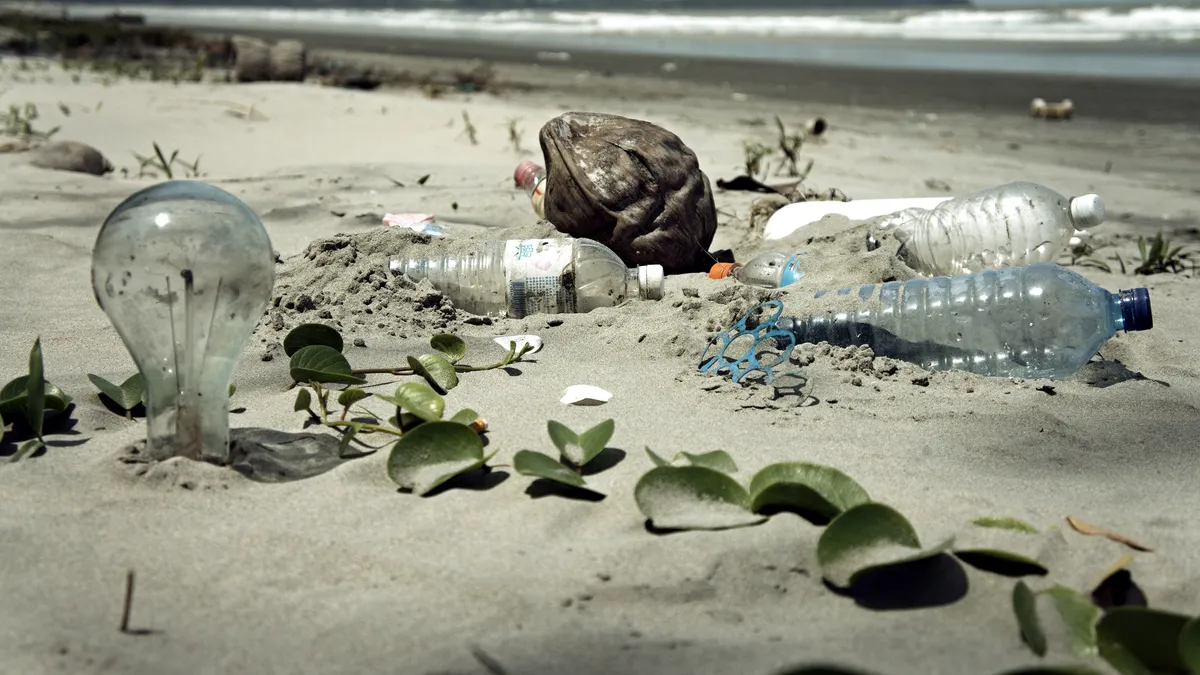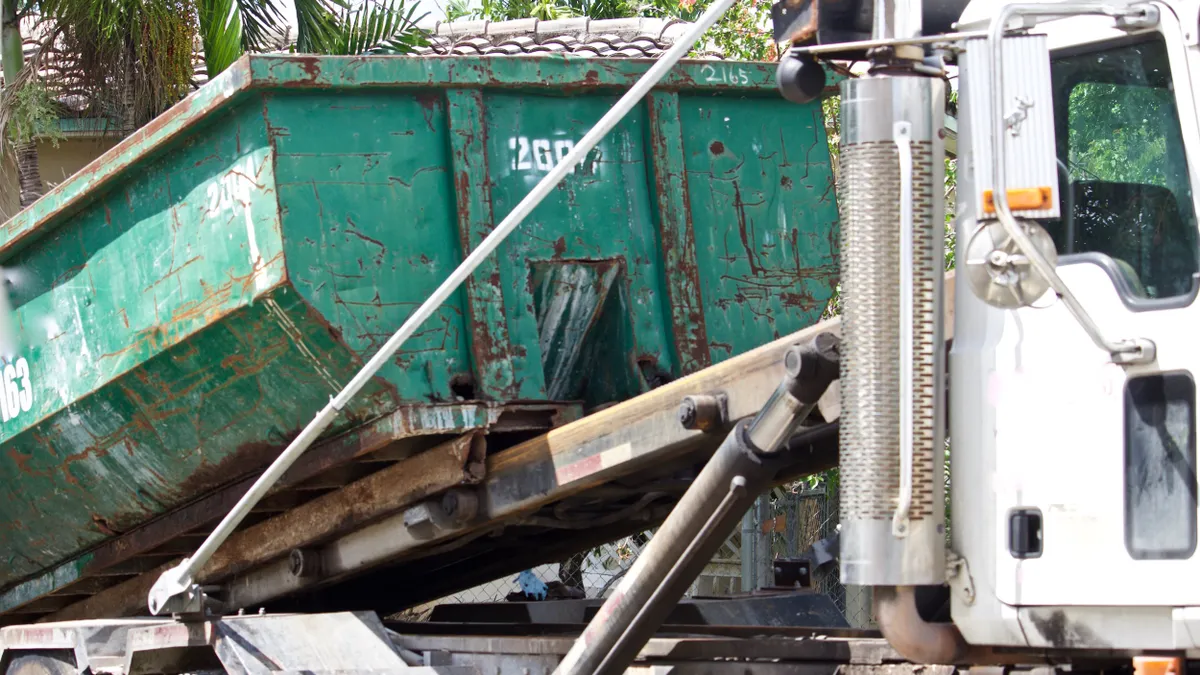Dive Brief:
- Scientists and volunteers on the "Mega Expedition" who have spent the last month gathering data on how much plastic garbage is floating in the Pacific Ocean say most of the trash is medium- to large-sized pieces, not tiny ones.
- Three of 30 boats that have been mapping the location of tons of waste between the West Coast and Hawaii — known as the Great Pacific Garbage Patch — returned to San Francisco on Aug. 23.
- Researchers want to test a 2-mile barrier to collect garbage near Japan. The ultimate goal is construction of a 60-mile barrier in the middle of the Pacific.
Dive Insight:
Keeping plastic out of and cleaning up the oceans is getting a lot of attention, as the effects of the pollution on marine and human life become clear. Animals get caught in the pieces, and some eat the plastics, which can cause death.
Oceanographer and chemist Charles Moore of the Algalita Marine Research Foundation says the chemicals in plastic can potentially cause cancer in humans who eat marine animals.
And while the best way to keep the oceans clear is for people to stop littering, others are trying to clean up the waters.
Boyan Slat, 21, founder and CEO of The Ocean Cleanup, announced in May that his system to passively clean up plastic debris from oceans will be deployed in 2016, possibly off the coast of Tsushima, an island between Japan and South Korea.
Data from the Mega Expedition will undoubtedly be helpful in the overall effort to protect the oceans.














